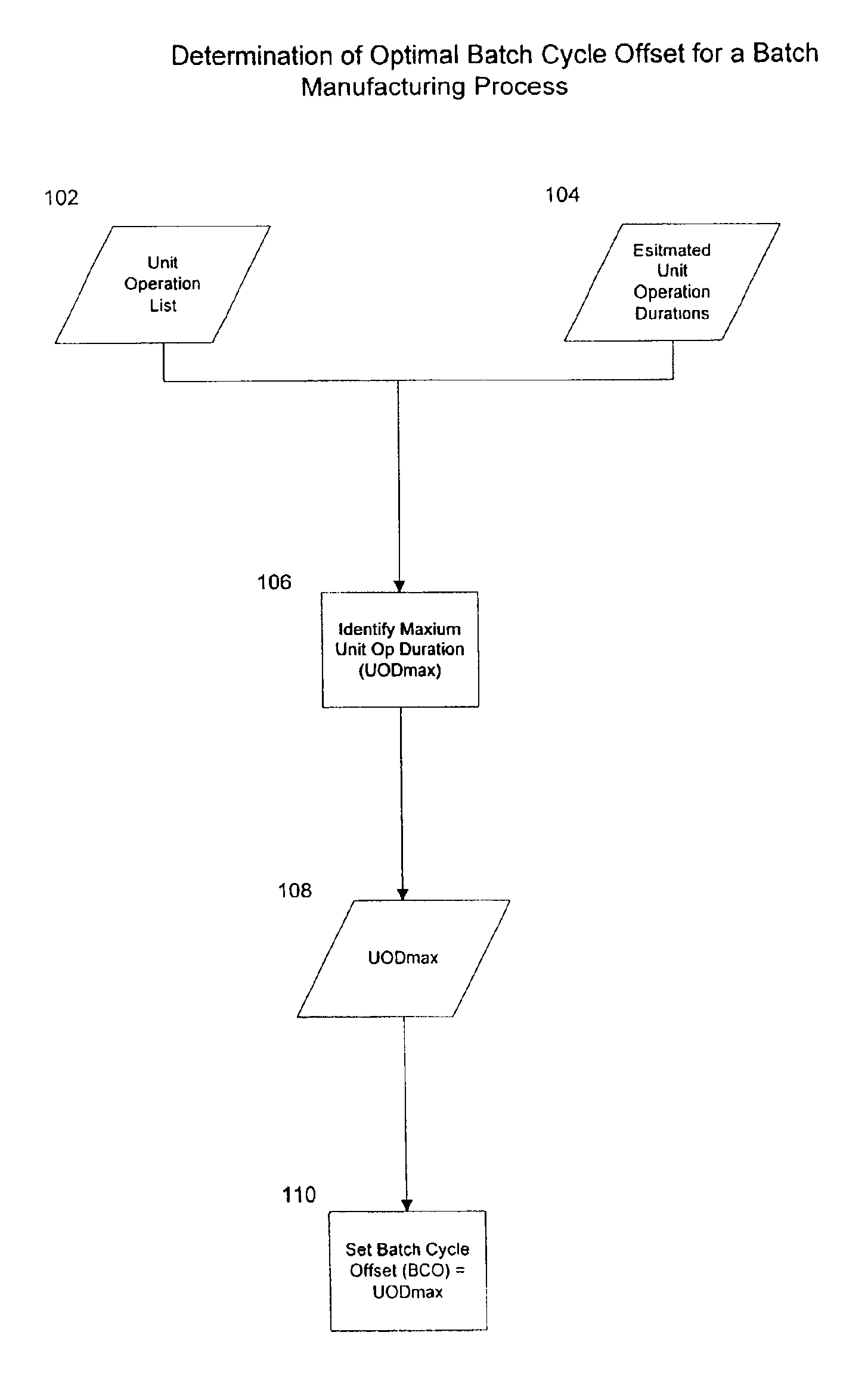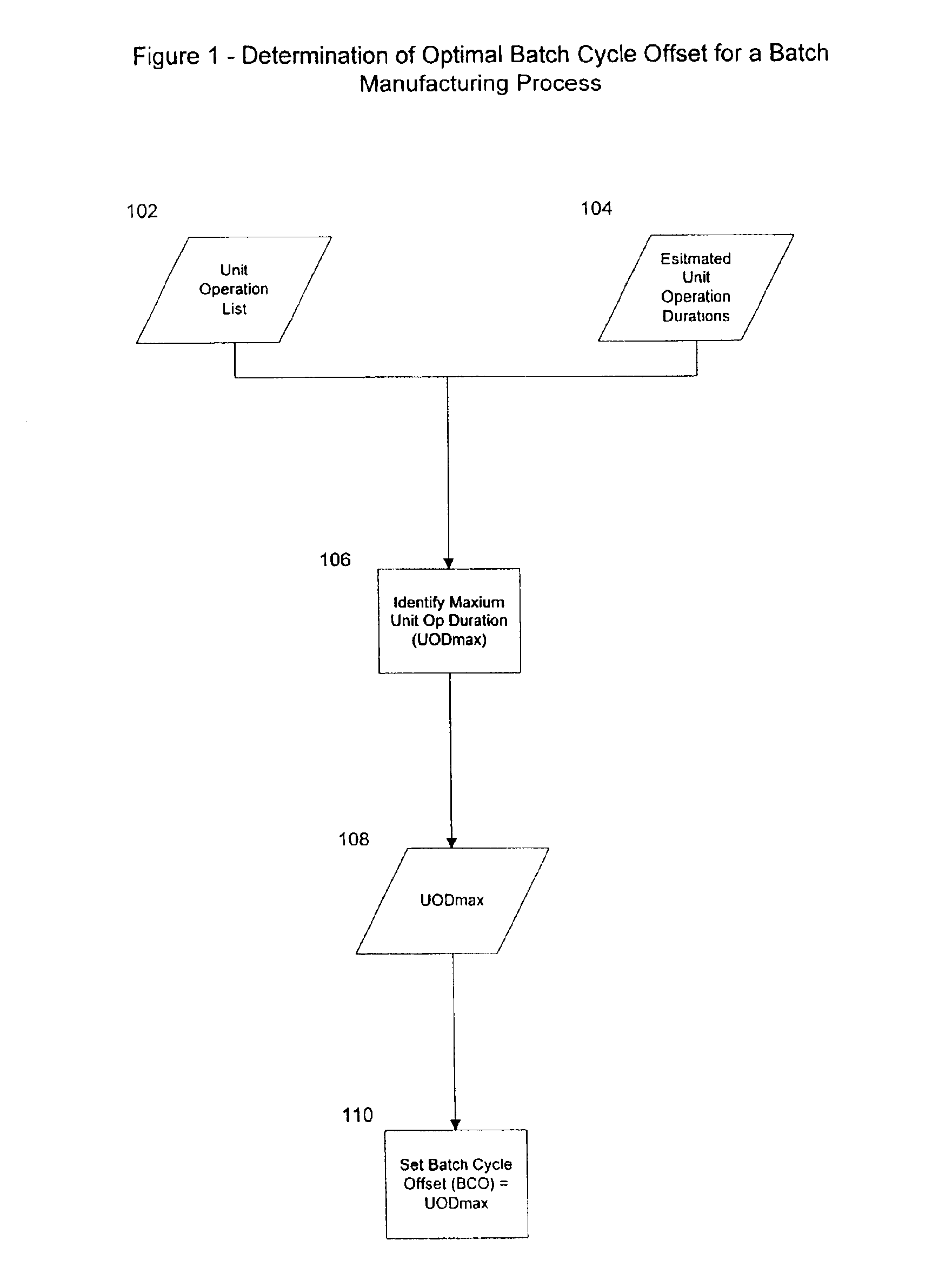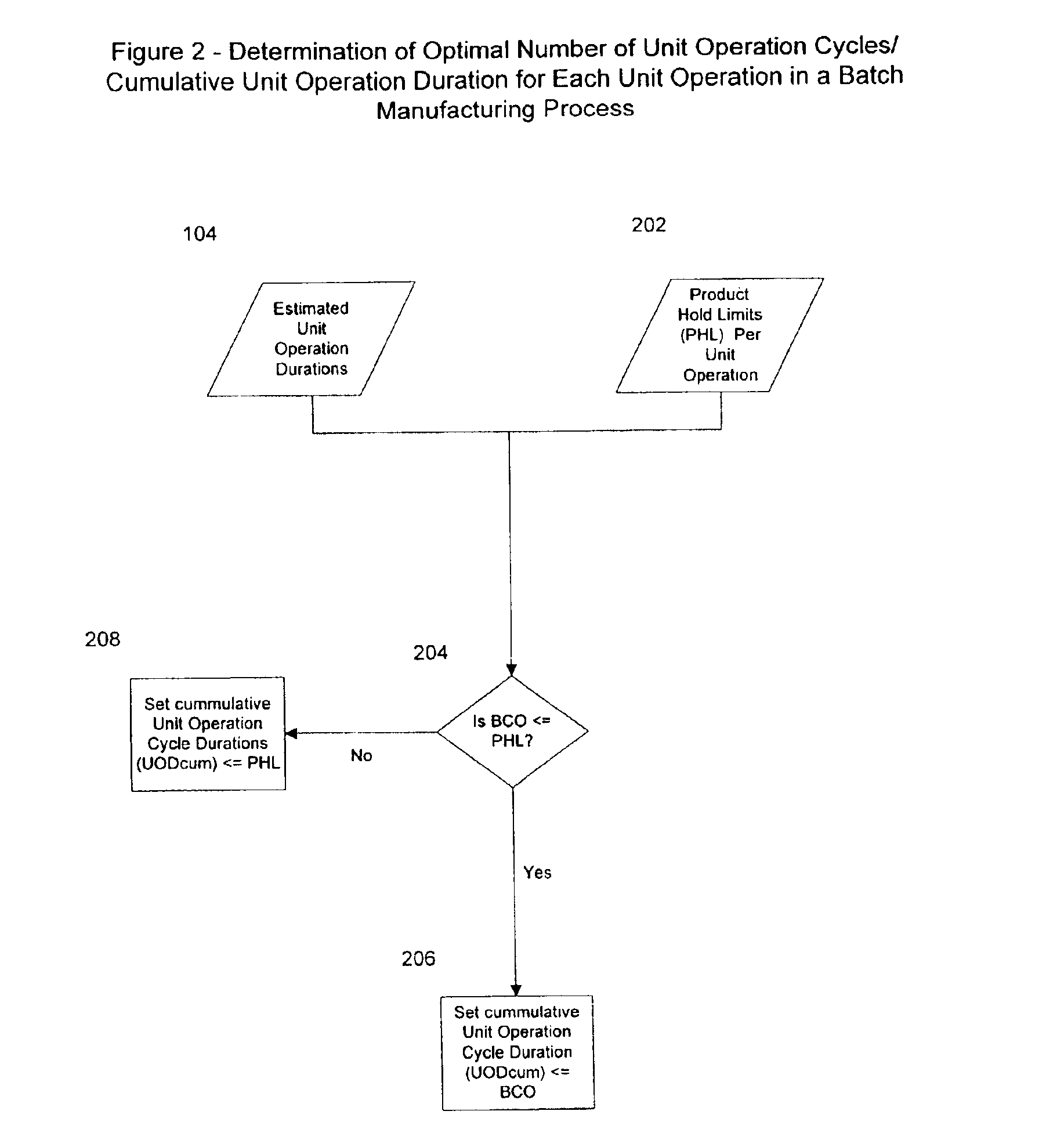Optimization of manufacturing equipment capacities in a batch manufacturing process
a manufacturing equipment and batch technology, applied in the direction of total factory control, programme control, instruments, etc., can solve the problems of short bcd, oversizing and/or underutilization of equipment in batch processes, and the schedule of equipment utilization in these batch processes is complex, so as to minimize equipment and direct utility costs, minimize equipment utilization, and minimize the effect of cost of goods
- Summary
- Abstract
- Description
- Claims
- Application Information
AI Technical Summary
Benefits of technology
Problems solved by technology
Method used
Image
Examples
Embodiment Construction
When appropriate emphasis is placed on achieving an optimal process design that produces the lowest COG, minimizing batch equipment capacities for a given annual production requirement (APR) becomes a focus of attention. As a first step, this minimization of batch equipment capacities is achieved by determining the optimal BCO for each batch cycle. As a second step, this minimization of batch equipment capacities is achieved by distributing the APR over the maximum possible number of batches per year based upon the optimal BCO and in a manner that takes into account the loss of available manufacturing time due to plant shut downs, equipment maintenance and equipment turnaround times. As a third step, the minimization of batch equipment capacities is achieved by cycling the equipment associated with each given unit operation the maximum number cycles possible per batch cycle in order to achieve high equipment utilization factors that minimize the size of equipment for a given batch c...
PUM
 Login to View More
Login to View More Abstract
Description
Claims
Application Information
 Login to View More
Login to View More - R&D
- Intellectual Property
- Life Sciences
- Materials
- Tech Scout
- Unparalleled Data Quality
- Higher Quality Content
- 60% Fewer Hallucinations
Browse by: Latest US Patents, China's latest patents, Technical Efficacy Thesaurus, Application Domain, Technology Topic, Popular Technical Reports.
© 2025 PatSnap. All rights reserved.Legal|Privacy policy|Modern Slavery Act Transparency Statement|Sitemap|About US| Contact US: help@patsnap.com



